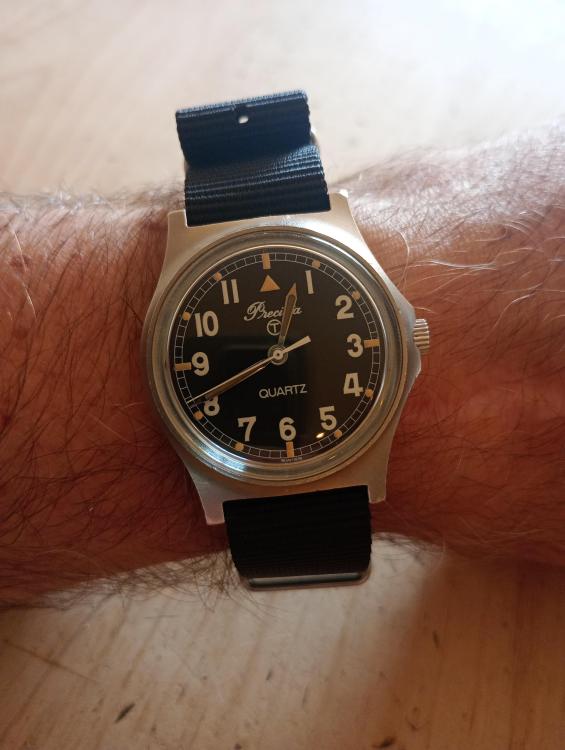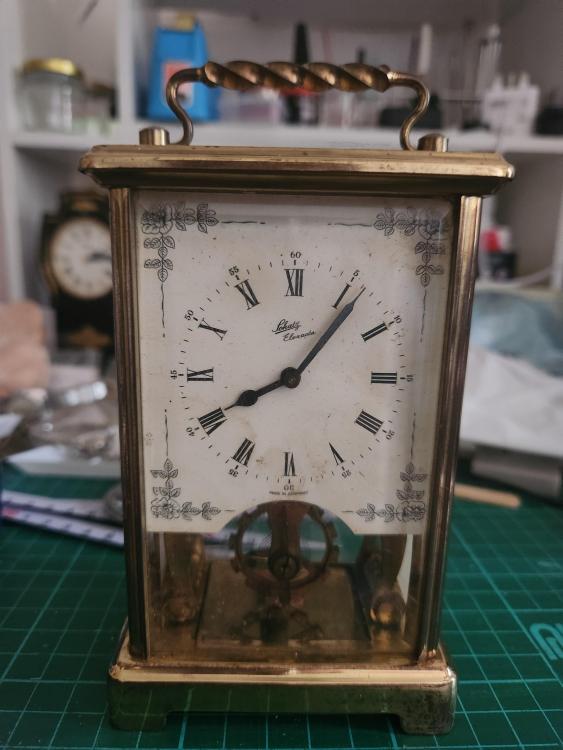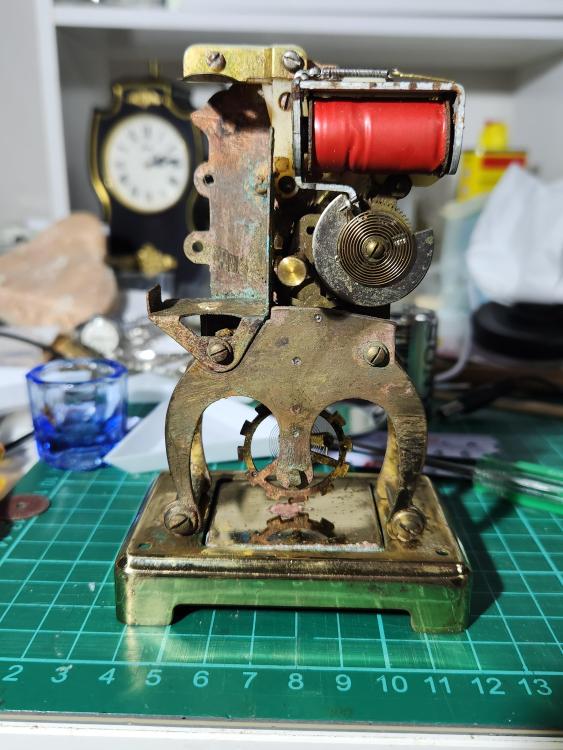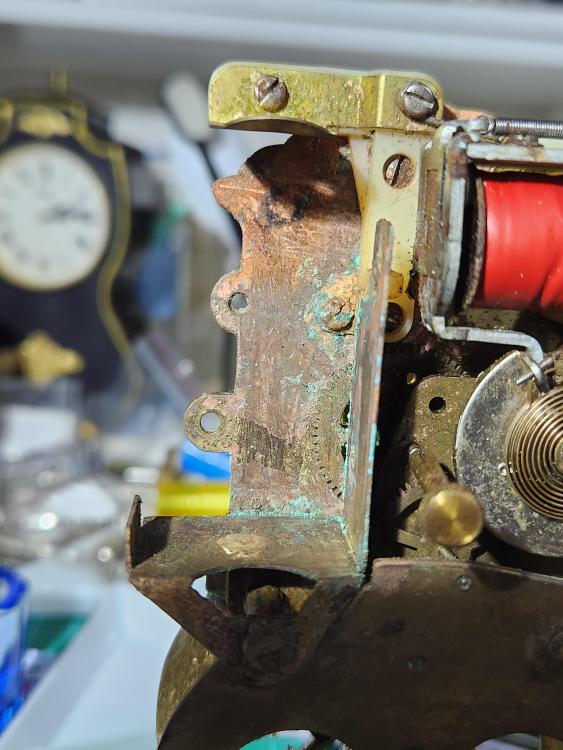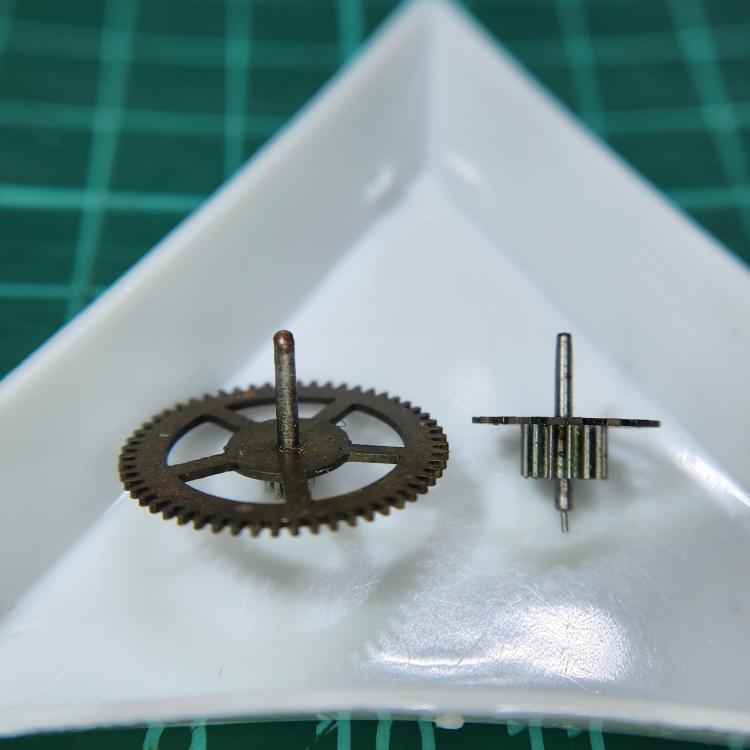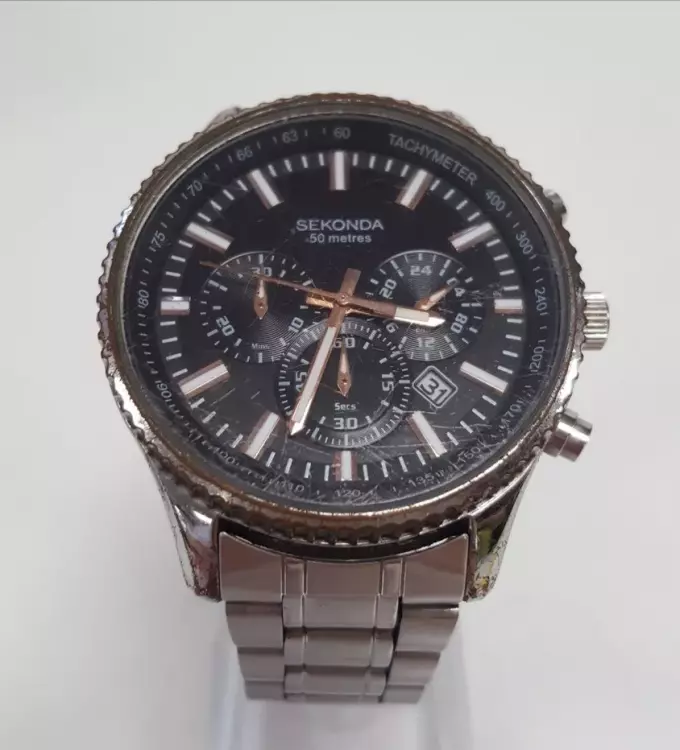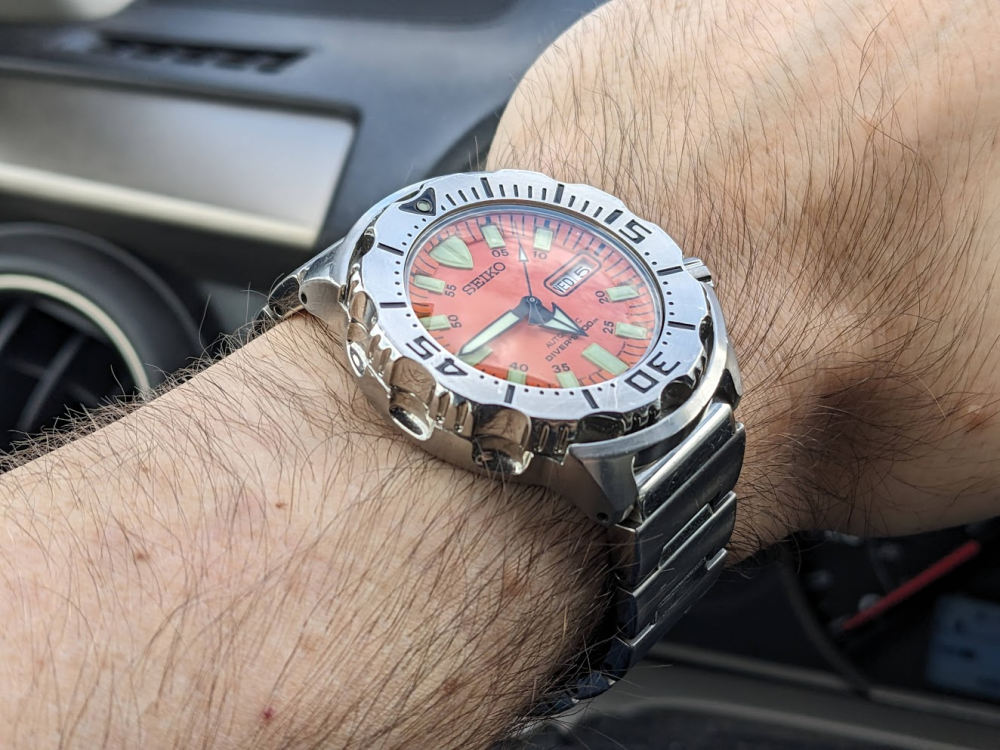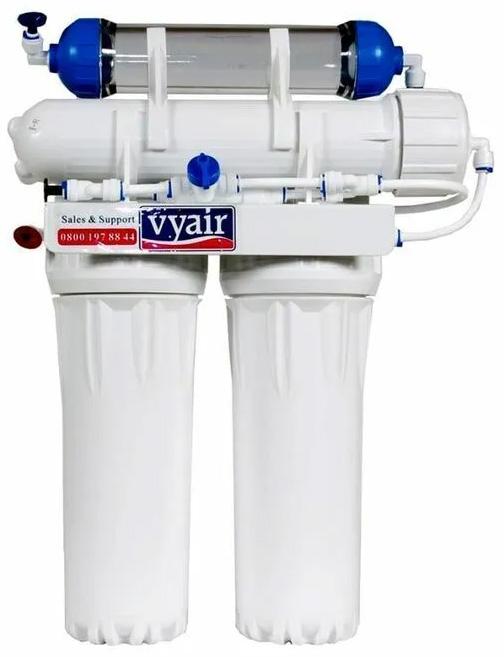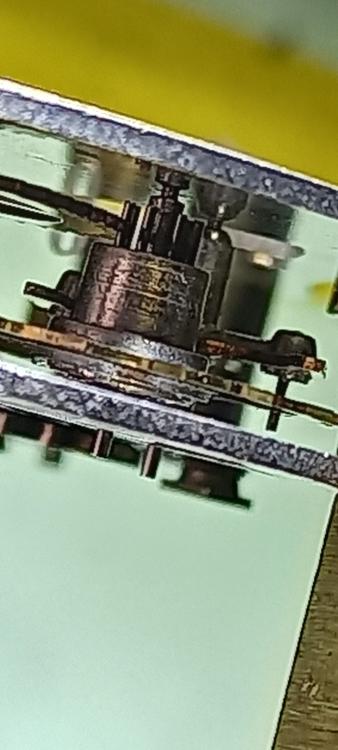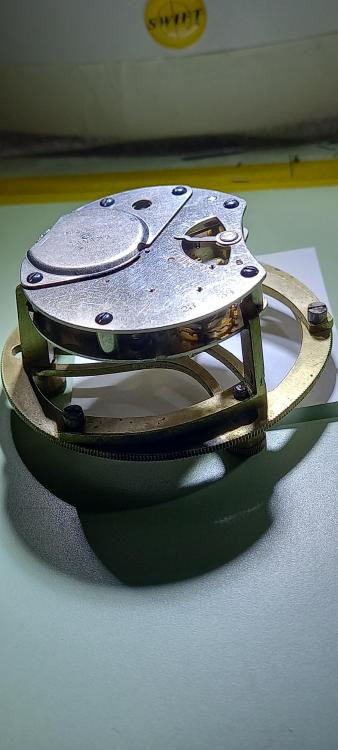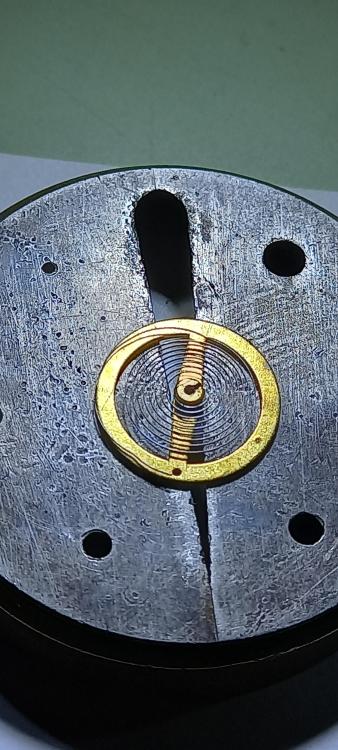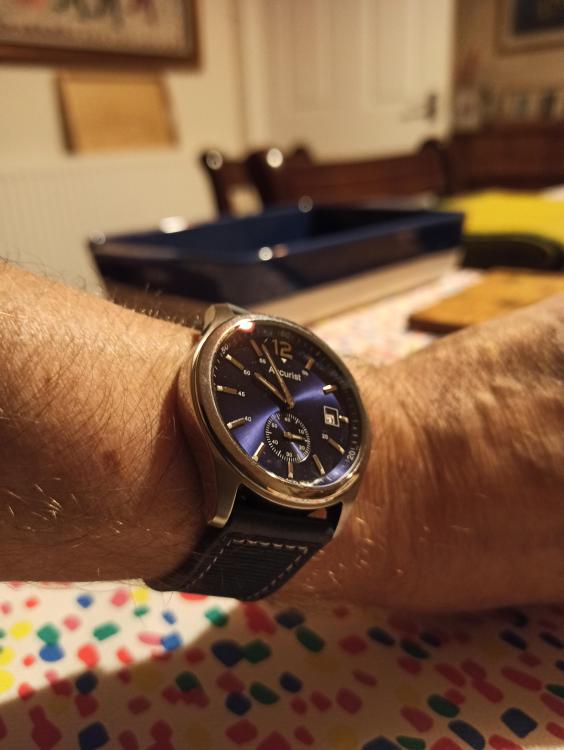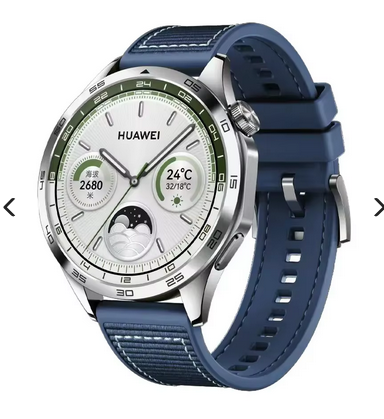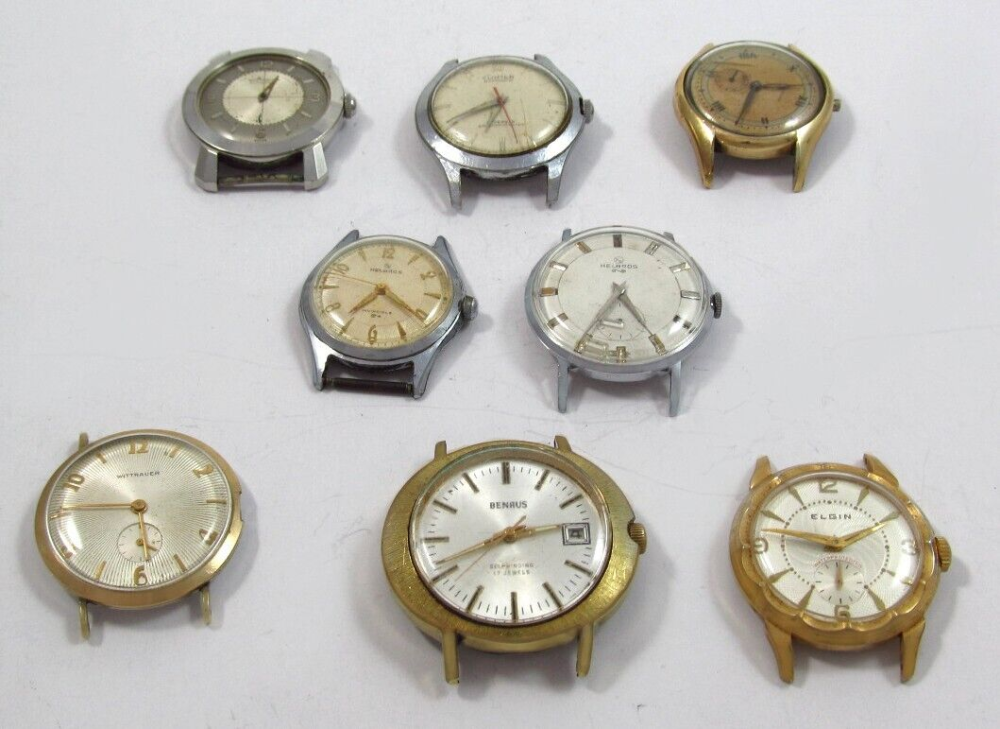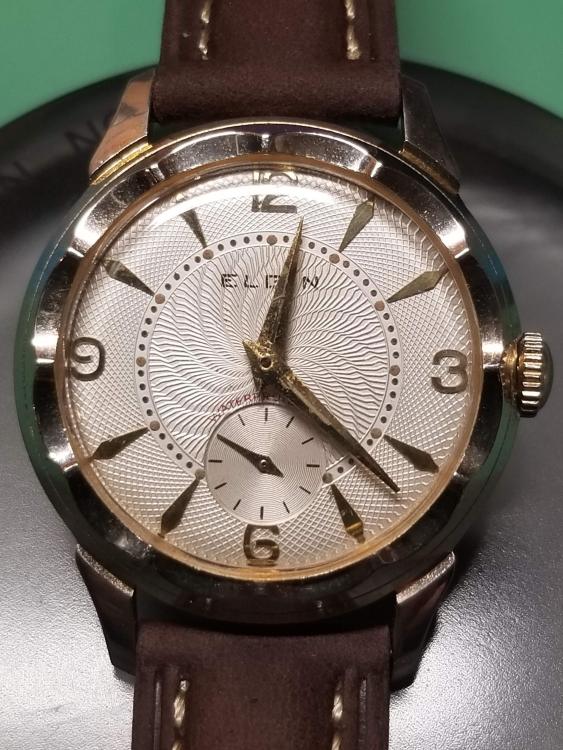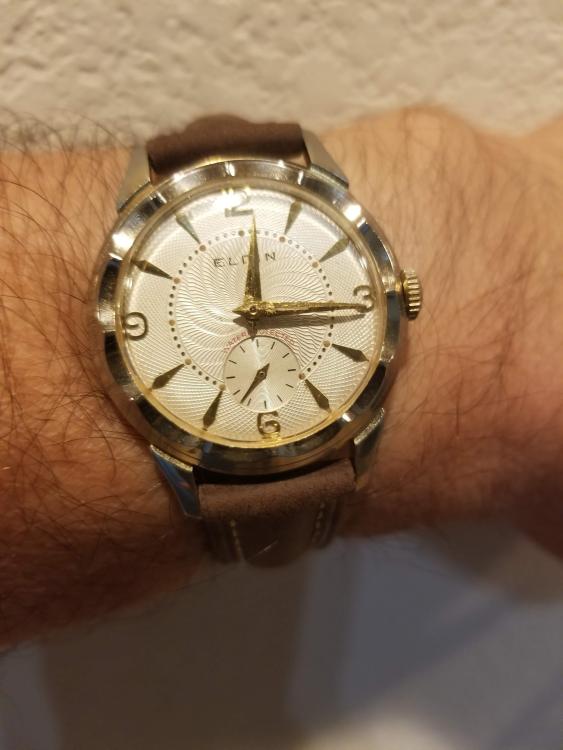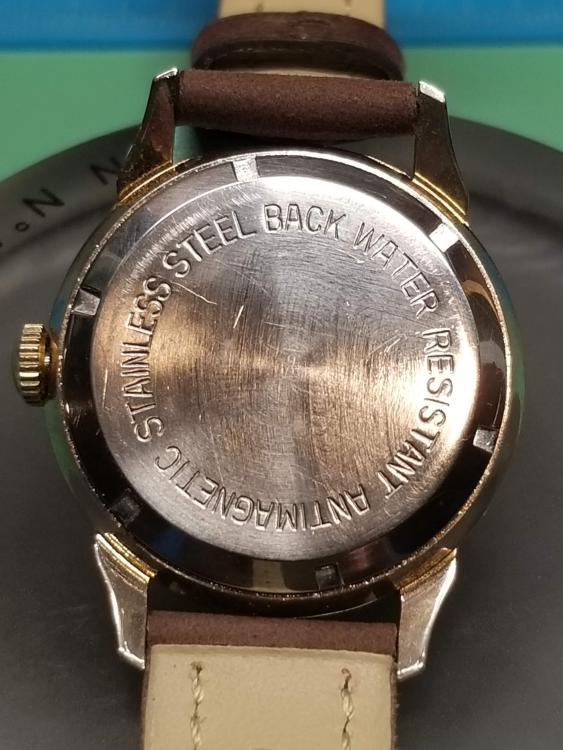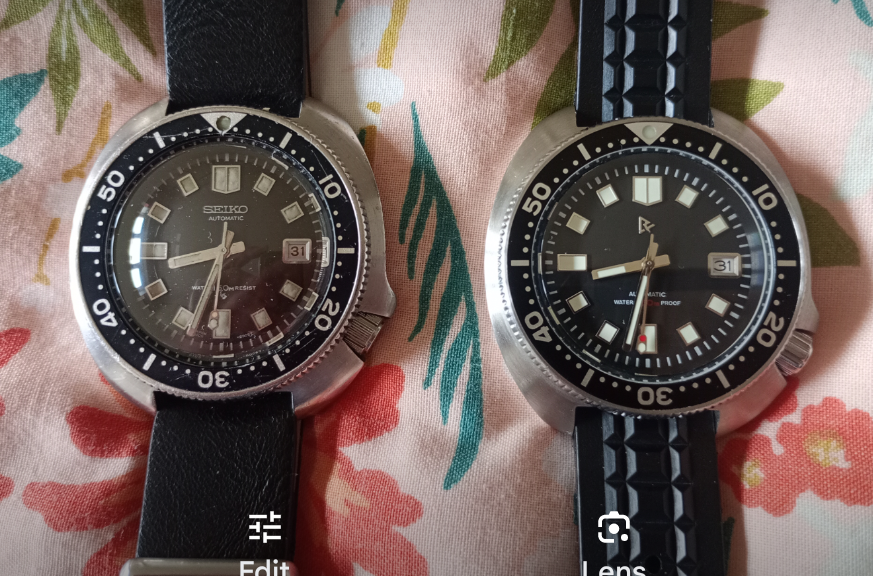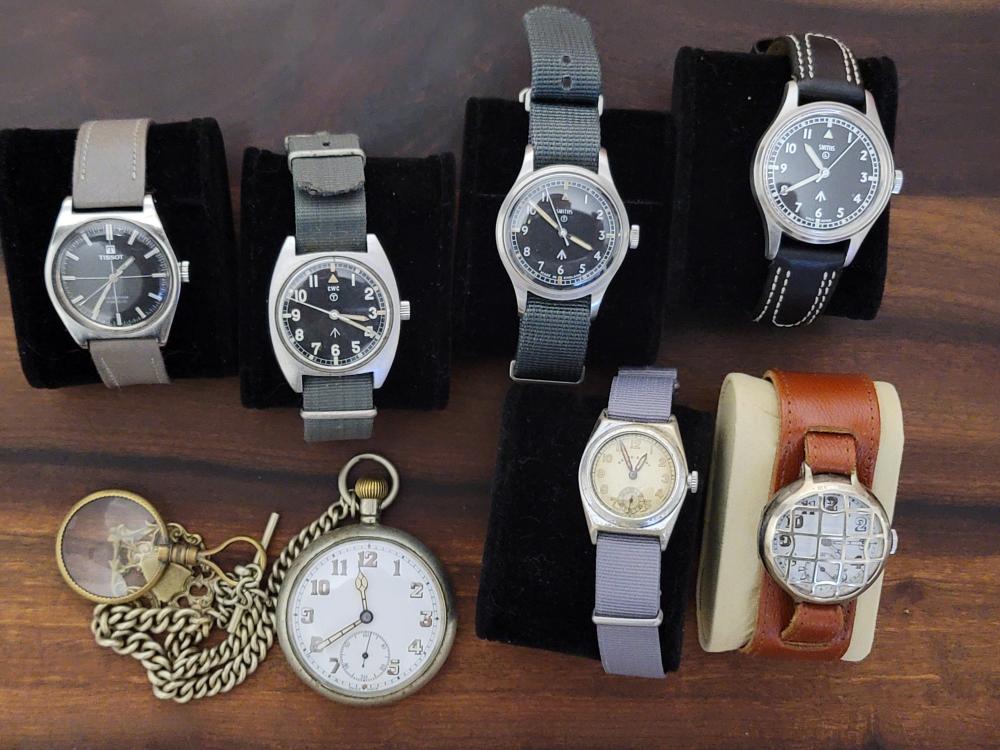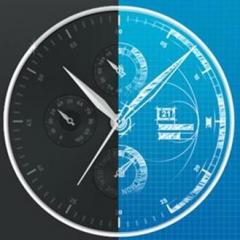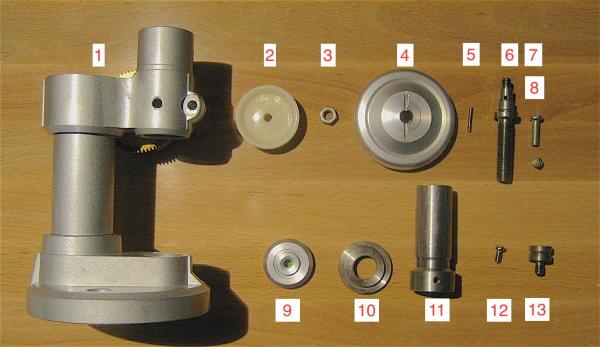Leaderboard
Popular Content
Showing content with the highest reputation on 09/06/24 in Posts
-
Water purification is a subject that even some manufacturers don't understand. About 20 years ago, I was called in to investigate why instruments coming out of a top-of-the-line Swiss vacuum autoclave were coming out with rust. I discovered that the autoclave was supplied with a "deionization unit" that uses ion exchange resin technology. This is an antiquated technology that uses a resin that binds ions like calcium and magnesium and REPLACES it with sodium ions. It is basically a water softener and not a deionizer. I had a heated argument with the manufacturer as they had absolutely no idea of what they were doing. I pulled out a TDS meter and showed them that the water coming out of their deionuzer was not free of ions. And still they could not understand. Their conclusion was that the water in Singapore is of such low quality that it is unsuitable for use with their autoclave. They claim they have no such problem with Swiss Alpine water. I advised my client to tell them to go home and sell only in Switzerland.3 points
-
3 points
-
I received this electromechanical carriage clock this afternoon. It's a Schatz Elexacta. The seller described it as "balance swings freely but doesn't work, nonetheless a nice piece to display". I thought the four panals would be glass but it turns out to be plastic. Externally, it doesn't look too bad. But once the cover is off, the true extent of the damage is evident. There must have been a massive battery leak. A lot of the brass is corroded and some pivots have rusted away. Some of the pinions have also rusted. The winding mechanism is a little strange. Instead of a DC electric motor, it uses a modified DC relay which when activated, kicks a weight which will wind the mainspring. The mainspring is so small and fragile that some of my other clocks have hairsprings that are beefier that it. Looks like this project would be more involved than I expected. I'll need to repivot two wheels and straighten one pivot. Clean off all the rust and polish the brass. Then apply lacquer to preserve the brass. It's probably going to take me a month or two to complete this.2 points
-
It would have had a glass dome and it might ever have had a plinth for the clock to stand on. Type in google french glass dome for clocks and click on images.2 points
-
If you want to go antique and not Chinese new then for the price you'd be as well looking at something like this. https://www.ebay.co.uk/itm/1865930321532 points
-
Looking at the logo it looks like the same as on the Janta/pearl watch cleaning machine. They are made in India and quality can be variable. Tom2 points
-
They're usually a simple gear friction fitted onto the dial side, but able to be levered off to separate the center wheel. But that's not the source of setting friction. On the back of the center wheel pinion are a couple of washers, possibly cupped, that supply the friction. When you get the hands on, you might find that cleaning machines have loosened up the friction and it won't keep time until you stake that washer back to be tight enough. This has happened on almost every dollar movement I have worked on.2 points
-
2 points
-
It's the dissolved oxygen (O2) in the water that corrodes the iron/steel, the minerals in tap water act to increase the conductive properties of the water (ie making the water into a better electrolyte) allowing the galvanic cell to exist. This is the reason that salt water is far more corrosive than fresh water, the salt turbo charges the corrosion cell. The battery water is deionised to remove minerals (mainly calcium) that would be formed as part of the electrolysis reaction and reduce the performance of the battery. Instead many car batteries have sulphuric acid as the electrolyte, which does not form deposits, but is an excellent electrolyte in solution, and adding deionised water just re-dilutes the solution back to what it was when it came out of the factory. I was once on a tour of a fresh water lake in Canada where whey tried to use the standard method of measuring the purity of the water by reading the electrical conductivity. They were puzzled by the fact that both their devices were defective, then (after scratching their head) realised that their instruments were fine, it was the fact that the lake water had no minerals in it, and the water could not conduct electricity. I would be interested to know how they are treating the battery water, are they removing the minerals, or simply replacing them like they do with water softeners, ie replacing the calcium ion with sodium. If it is the former then all good, as you are making the water a poorer electrolyte, but if it is the latter than you still have minerals in the water and your water is still acting as a good, possibly even better (??) electrolyte, as you would be replacing 1 calcium ion with 2 sodium ions. This is the limit of my chemistry knowledge, so if there are any chemists out there please feel free to add to this or correct my mistakes.2 points
-
Just a minor update. I'm gonna dust off this watch again this weekend hopefully and try replacing the mainplate or train bridge with a spare to get to the bottom of this mystery. But I serviced and repaired the hairspring on a 7s26c i'd had around i mentioned, put in that generic mainspring. Got the amplitude up into the 255 to 265 range on it and really focused on correcting the hairspring from a pretty bad state and trying to adjust it as perfectly as possible and get the everything as fine tuned as possible. I managed to tie my record and get a six position delta on a 7s26c of only five seconds and in four days it's gained one second of time! I definitely haven't lost it. Something is wrong with the watch i started this thread on. The 2377x generic spring for this works and can keep great time but I'd definitely get the next stronger one to get that amplitude up a bit. I'll test that out at a later time. Either way it feels great to have my fav watch back on my wrist and running phenomenal, and I treated her to a double dome sapphire.2 points
-
As you have changed the hairspring to one that is a little stronger I expect that is the problem. Verge escapement are designed to run on as little power as possible with very low amplitude, in other words very little swing in the balance.2 points
-
Hi Bob, I must say that there is not such thing as overbanking in verge movements. The balance movement is limited to +/- 90 degr., in french movements may be +/-100. Normal amplitude is 60-65 degr., in good french movements even 70. When the verge (the balance staff) has flags, the movement of the balance is limited by obsticles where the flags hit in early english movements (limitation by the flags), or with a pin on the balance rim in french and late english movements (limitation by the balance rim). Limitation is needed because if the balance is turned more, then the crown wheel will get free and will start turning fast. And when balance (verge) is returned to normal position, the crown wheel teeth will hit the flags and will grind themselves wearing fast for only a moment as if they have worked for many years. No mater what the torque is, the balance will not get to the points of movement limitation. Actually, the amplitude barely depends on torque. Limitation is needed when the movement is shaken or rotated suddenly, thus balance received additional impulse If the limitation is not enough and turning the balance in some of directions causes freeing of the crown wheel (worst case) or locking of the escapement where the balance stays rotated to the limit, this will usually mean that the engagement of the crown wheel with the verge is not deep enough. But it is possible for example that the verge is rotated against the balance wheel and when limitation is by the balance rim, this makes limitation not symmetrical - the problem will happen in only one direction of balance rotation, an in the other direction the movement of verge will be far away from problem. Another reason is verge replaced with not proper one, wear of flags and crown wheel teeth... I don't see clearly what type the verge on the picture is. If it has things similar to flags cut between the disks, then it needs limitation of the balance movement. In this case the cross section of the 'flag' part is flat and goes to the middle of the disks, like real flag. If the cross section of the 'flag' is just half circle (yes, such verges exist), then no additional limitation of balance movement is needed, the movement is limited by 'flags' hitting the crown wheel teeth. When all in a verge movement is OK, then it will start working by itself, without need of giving impulse to the balance. More - it will be not possible to stop such movement, as balance will start oscillating immediately after releasing no mater in what position it was halted. To bring the movement in such condition, it is needed very lo friction in bearings of the balance, crown wheel and 4th wheel. Free oscillations test will show the condition of balance pivots/bearings. As verge movements are ones with recoil, the energy is constantly transferred from mainspring to the balance (when the crown wheel is turning forward) and back from balance to the mainspring (when the crown wheel turns back). That's why the crown wheel, the 4th and even 3th have very thin pivots and the rear crown wheel bearing has axial steel plate, acting the same as cap jewel. It is important to have all the bearings in perfect condition and the mesh between wheels and pinions to be correct.2 points
-
If it's labelled as Deionised, it should have been produced in a reverse osmosis system. https://en.wikipedia.org/wiki/Reverse_osmosis If you used more than small quantities of deionised water & don't have a free source, it's worth setting one up. You can get the parts from various suppliers on ebay. It's basically some cartridge filters to keep particulates and chlorine out of the RO element, the RO unit itself & some tubing. A basic system with sealed, disposable filters is around £40 or one with replaceable cartridges (so cheaper in the long term) around £80. All the filter housings etc. are cheap enough separately, so you can build one from scratch or add better pre-filtering if you live in a hard water area, so the RO membrane lasts longer. I built one some years ago when I was using quite a lot & the stuff was £4 per gallon to buy. (Some kits also have a mineralisation adding stage after the RO unit, to give purified drinking water some flavour.. Not needed for cleaning or chemistry uses!) Examples:1 point
-
I can't say if it's good enough for a demanding application, but I get distilled water for free from my home dehumidifier in winter. I pasteurise and bottle it to have a supply all year. I'm aware, though, that the water has trickled over the vanes of the condenser and will have picked up some particles. Also the collector vessel was supposed to have an anti-fungal coating when it was new. But I live in an area where a single drop of tap water leaves calcium carbonate behind and at least my free distilled water doesn't do that!1 point
-
Thanks For the reply Rob. The wheel pinions made me laugh, i wonder if thats where the name comes from these are just pins diametically placed around the wheel hubs ( aluminium hubs that support the pivots, the escape wheel pivot was sliding inside the hub , amazing quality i think Dollar watches were overpriced ). I was unsure as to the cannon pinion looked friction fitted , i didnt try seperating it from the center wheel and cleaned them both in situ. Timing was a long way out - 800s/d and the inner coils of the spring are also catching the side of the loosly termed regulator pins, no knee bend terminal curve so i thought i would make one , just adding that now. Two pieces of equipment to shi definitely ow, the movement holder is extremely good for PWs, easy to handle and loads of cutout underneath for working both sides at once and the balance holder , traps the roller between a compound tapered slot , keeps the balance held then the whole unit can be picked up looked at worked on etc. I definitely recommend both of these for working on PWs , the MH was about £20 and the bal. holder came with a job lot of tools but I've seen them separately for about a tenner. Mine needs the top re-finishing. A little hack, slide paper under the hs for your anchor tweezers to rest on while adjusting1 point
-
The winding side is OK, considering the size of the spring. The time setting is very stiff, despite thoroughly cleaning and oiling the centre wheel hub. This is one of the last bits from my fathers estate; he had about a dozen pocket watches but I sold most of them, as I had no spare time or interest for them back in the early 80s.1 point
-
I've shown this 404 club Miyota quartz caliber GP11 Blue dialled Accurist before, but I've not worn it much as the strap I put it on originally was a little too stiff and inflexible. I thought it was a bit of a wast to just leave it potentially gathering dust, so decided to treat it to a new soft silicone/nylon strap from the bargain bins on AliExpress. There are thousands of straps on AliExpress, and some of them are well worth the "not very much" they cost, so long as you are prepared to wait for them to ship half way round the world. The strap I plumped for eventually was described as "Official 22mm Nylon Strap For HUAWEI WATCH Silicone Band GT 4 46mm Watch 4 Pro GT 3 2 Pro Sports Composite Wristbands Bracelet" In other words, a 22mm silicone/nylon band with quick release pins. It cost a mere one pound forty seven pence, with free shipping since I include it with a bunch of other stuff. I'm very pleased with it so far. The quality seems well in excess of the price I paid.1 point
-
When the spring is set and it's diameter has got smaller, heating it will enlarge the spring to it's original diameter. As the springs have memory, they say. Enlarging will happen immediately when heated. Long time heating will take out the hydrogen atoms that has got with the time inside the structure of the steel and cause it to be crunchy.1 point
-
Water is inherently rich in oxygen, being 33% of it, the problem is really about tap water. Tap water is never close to pure, depending on where you are in the world you have additives, like fluoride and chlorine as antibacterials. You also have the minerals that have been dissolved into it in the aquifer/substrate it has traveled through. On top of that it may be buffered by the water company to get it as neutral as they can, 7.0PH. Distilled or better deionised water are best for our application. Deinonised water does however leach metal ions from any it touches, though the short exposure we would have it would not be any problem compared to tap water. Tom1 point
-
1 point
-
Several months back, I was perusing eBay looking for a cheap watch to work on. Saw this lot of 8 watches and got them all for pretty cheap. What attracted me to the lot was the scalloped case of the Elgin. The movement turned out to be an Elgin Grade 524, manufactured in 1937. I finally got around to servicing it. The balance wheel had lots of issues (bent hairspring, wheel out of true, roller table not fully set on balance staff, and a loose roller jewel). I ended up finding a 1936 donor movement to steal the balance out of. Well, that doesn't seem to work well with these older timepieces. So, I serviced the donor and got it to run pretty decent. I ended up doing a movement swap with the watch. Now I have a movement that I can use as my guinea pig for a variety of balance work. The watch turned out quite nice i think. Case just needed a clean and light polish. Crystal was in good shape. Added a leather strap to finish it off. Love the look of that case and dial.1 point
-
I am not the one to say if You are crazy, but what You describe is common for the movements with indirect driving of minute hand pinion and 7750 is one of them. The simple explanation is that there is a free play between teeth of wheel that drive the pinion and the pinion leaves (the mesh between wheels) and this free play measured by the hand moving is about 30 sec. This is due to the construction of the movement and is fully normal. To avoid what You describe, set the time finally by moving the hand back, not forward. Wat I mean is if You need to set 12:00, then set to 12:01 and carefully turn back to :00, thus the hand will start moving immediately after pushing the crown in.1 point
-
1 point
-
Here's my military collection from the bottom of the world in NZ. The two that interest me the most are both not military issue but rather private purchases that saw service in either WW1 or WW2: the old timer from 1916 sporting the "shrapnel guard" and the little Revue Sport . The 1916 watch was worn through WW1 and the owner was wounded four times. The little Revue Sports was worn by an engineer in a NZ armored regiment in WW2. The Tissot is an interesting beast - it has a heavily polished case-back with a broad arrow and a "PAF" marking. I've had various explanations offered for the PAF engraving but none that I can reliably verify.1 point
-
I have wanted a Robur watch crystal press and dies for a long time, but when considering the cost of about £510 (CousinsUK, excluding shipping and VAT) I just couldn't defend it. However, as the Robur-like press, shown in my video, now and then shows up in various YouTube videos I got curious and ordered it from AliExpress. I don't think it's on par with the Robur press, but for the price, it seems like a decent option. In the video, I happened to mention that I was going to link to my WRT service walkthroughs, so below is the list in case anyone would be looking for it. Hope you'll find my video useful! My Service Walkthroughs: Citizen 8200A ETA 2892-A2 2804-2 2836-2 955.112 2772 2472 2824-2 Vostok 2431 2409 Enicar 161 Miyota 8205 9015 Tissot 781 Omega 268 Orient 46E40 Unitas 6380 63251 point
-
Solved – Removing outer bezel A special thanks to @mikeyt_53 (WTF) for responding and relating your experience. These comments along with a number of YouTube video’s, in particular (below) stopped me from second guessing myself, resulting in successfully removing the TAG bezel. For those that follow I succeeded using the following method. 1. Working a knife edge between the case and bottom of bezel, lifting the bezel enough I could spray (into the hex-spring groves) penetrating oil. 2. With the knife holding a small gap I worked in a small jeweler’s flat screwdriver, widening the gap a bit. 3. Using a second small flat screwdriver I worked the gap around the bezel bottom until the bezel popped off the case. Note: that before using this method I tried using a four point case-splitter which did not work. Again, thank you & good luck Will1 point
-
I have often wondered about laying one of my stereo speakers on its back , placing a large dish over the woofer,putting the cleaning solution and parts in a plastic jar and listening to Jethro Tull.1 point
-
1 point

.thumb.jpg.19a9c4ff164d78d516aa9f05a063752b.jpg)

